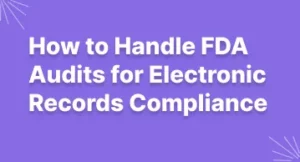Get more Secure: Learn Difference of E-Signature & Digital Signature
Introduction: Electronic Signature and Digital Signature
An electronic signature and a digital signature are two terms that are sometimes used interchangeably, but there is an important difference between them. An electronic signature (or e-signature) is an umbrella term that generally covers any signature that is created or adopted through an electronic means, such as clicking on ‘I agree’. A digital signature, however, is a special kind of electronic signature which requires a unique cryptographic key to enable the signature.
Difference between an Electronic Signature and a Digital Signature
The terms electronic signature and digital signature are often used interchangeably, but there is a difference between them. Although an electronic signature can refer to any type of signature via a computer or electronic device like a tablet, digital signatures are much more secure and offer more protection for users.
Digital signatures use encryption technology to guarantee the authenticity of a document. These signatures are created with a private key only known by the signer, and they require a signature verification process that ensures accuracy and reliability. The private key is paired with a public key, which allows the receiver to decrypt the document. A digital signature also contains additional verifiable information such as date and time, as well as the identity of the user.
An electronic signature is generally less secure than a digital signature. It does not use encryption technology and it cannot guarantee that the person signing the document is who they say they are. Electronic signatures don’t always require verification or authentication, so there’s no way to ensure the accuracy of the data.
In summary, a digital signature provides a higher level of security and trust than an electronic signature. It is legally binding in most countries, and it ensures that documents remain secure and authentic.
History of Electronic Signatures/ Digital Signatures
The use of electronic signatures and digital signatures is not a new concept. It has been used for decades, but the technology was limited in its ability to provide a secure platform for digital signing. The first remote electronic signature law was passed in 1999, known as the Uniform Electronic Transactions Act (UETA), establishing that electronic signatures were valid for legal purposes.
The following year, the Electronic Signature in Global and National Commerce Act (ESIGN) was passed by the United States Congress, further expanding the use of electronic signatures in legal documents. In 2004, the European Union enacted the Electronic Identification and Trust Services for Electronic Transactions in the Internal Market (eIDAS) which set the standards for electronic signatures outside of the US.
These two acts established the legalities of using electronic signatures for commercial transactions, allowing companies and individuals to securely confirm documents without having to be physically present. This gave rise to the modern-day digital signature software solutions, which make it easy to verify documents across the globe.
What is an Electronic Signature?
An Electronic Signature, or e-signature, is a method of signing legal documents and contracts electronically. This digital version of a handwritten signature can be used to provide evidence of a legally binding agreement. To create an electronic signature, one may use software programs such as Adobe Sign, DocuSign, Hello Sign or other digital signing services. The most commonly accepted form of e-signatures is Secure Electronic Signature (SES) technology, which is based on asymmetric cryptography and utilizes two keys: a private key and a public key.
The key owner discloses the public key to the other parties in the transaction, while securing the private key for themselves. This ensures that the owner of the signature can be uniquely identified and that the signature cannot be forged. The signature is then incorporated into the document to be signed and the document is digitally signed and encrypted with the public key.
What is a Digital Signature?
A digital signature, also known as a digital certificate, is an electronic signature used to verify the authenticity and integrity of electronic documents. It is an encrypted version of an individual’s signature, along with other information such as time and date, that is attached to a document that has been digitally signed. By using a digital signature, you can securely sign documents without having to physically sign them.
A digital signature is a type of electronic authentication that uses strong encryption technology to create a secure link between two parties. This link ensures the integrity of the document being signed and verifies its origin. It is similar to a traditional signature, but it is much more secure and provides more assurance of the authenticity of the document. Additionally, digital signatures provide a more secure method for authenticating documents and can be used to validate the identity of the signer.
Since digital signatures are encrypted, they can provide a greater level of security than traditional signatures. They also provide more flexibility than physical signatures, making them easier to use and more convenient. Furthermore, digital signatures are more cost-effective and easier to manage than traditional paper-based signatures.
Benefits of Digital Signatures
Digital signatures offer many advantages over paper-based methods of authentication. They are more secure and efficient, helping protect confidential data and reducing errors associated with paperwork. Here are some of the benefits of using digital signatures over traditional paper-based ones:
- Speed: Digital signatures allow documents to be signed quickly and easily, reducing the time it takes for paperwork to be completed. This helps facilitate smoother business processes.
- Security: Digital signatures are more secure than paper-based signatures. They offer a higher level of security, as digital signatures can’t be copied or altered without detection.
- Cost savings: Digital signatures save businesses money by eliminating the need to print, scan, and store paper documents. Additionally, they reduce human error and enhance accuracy when inputting data.
- Legality: Because digital signatures are encrypted and secure, they are legally binding in most countries, including the United States.
Digital signatures offer many advantages over paper-based authentication methods, providing businesses with greater security, accuracy, and efficiency. It is no surprise they are becoming increasingly popular in the modern world.
Types of Digital Signatures
Digital signatures come in different types, depending on the level of security required. The two most commonly used digital signatures are a symmetric key signature and an asymmetric key signature. A symmetric key signature uses one key, shared between two parties, for both signing and verifying digital documents. Asymmetric key signature, also known as public-key cryptography, uses two separate keys for signing and verification. It divides the signature into two parts, with one part held by the signer and the other part held by the document recipient.
In addition, there are also software-generated signatures which are created using cryptographic algorithms. This type of signature is often used in combination with digital certificates to increase the level of trust around the signature. Software-generated digital signatures usually use hashing algorithms like MD5 or SHA-1 to verify the document’s integrity.
Use Cases of Digital Signatures
Digital signatures can be used in a variety of ways. One of the most common use cases is to authenticate documents, such as legal contracts, tax returns, and other forms of communication requiring agreement. In this way, digital signatures preserve the integrity of a document by providing proof that it was signed by an authorized individual.
Another common use case is secure data transfer. With digital signatures, organizations can ensure that their data is transferred securely, without any tampering or unauthorized access. This is especially important when transferring sensitive financial or customer information.
Aside from these two major use cases, digital signatures are also used for digitally signing emails, verifying identities for access control, and authenticating transactions in e-commerce and banking applications. This makes digital signatures a versatile tool for a wide range of applications.
Regulations for Digital Signatures
In the digital age, regulations and laws regarding the use of electronic signatures and digital signatures are essential. While they differ from one country to another, some of the main regulations in most countries include: allowing for the validity of documents signed by electronic means; recognizing contracts accepted electronically, and providing legal protection for electronic documents.
In the United States, the Electronic Signatures in Global and National Commerce (ESIGN) Act was passed in 2000 which allows the use of electronic records and digital signatures in all interstate commerce. The Uniform Electronic Transactions Act (UETA) was created in 1999 and is currently adopted by 47 U.S. states. This law allows for the use of electronic records and signatures in all transactions.
The European Union has also developed its own regulation and directive regarding electronic signatures and digital signatures. The eIDAS Regulation provides for four levels of electronic signature assurance, while the Directive on Electronic Signatures (1999/93/EC) defines the legal requirements for electronic signatures.
Signing Process using Electronic Signature/Digital Signature
The signing process for both electronic signatures and digital signatures generally follows the same steps. First, the signer creates an account with a service provider or an e-signature application, usually including verifying the signer’s identity. Second, the signee sends a document to the signer. The signer then reviews the document and signs it. Once the signer signs the document, they receive a confirmation notification and a copy of the signed document is recorded in the service provider’s system.
The difference between an electronic signature and a digital signature mainly lies in the technology used. An electronic signature relies on authentication methods such as passwords or biometrics while a digital signature uses encryption techniques such as public key cryptography. This ensures that the contents of the document being signed have not been altered and the identity of the signer is verified.
The biggest advantage of using a digital signature is security. When a document is signed using a digital signature, the authenticity of the signature and the contents of the document are verified. This provides an extra layer of security as the data being sent or received is encrypted. It also provides an audit trail, which allows any alterations to the document to be tracked.
Challenges and Concerns with Electronic Signatures/ Digital Signatures
There are certain challenges and concerns associated with the use of electronic signatures and digital signatures. These include problems related to user authentication, verification, and security. Due to the complexity of the process involved in verifying an electronic signature, it can be difficult to ensure its validity.
Digital signatures also require a process of exchanging keys among various parties, which can become complicated in certain circumstances. Additionally, if a malicious entity gains access to the key, they can use it to create or manipulate digital documents. Furthermore, there is the problem of document tampering, which is not always easy to detect.
In addition, different countries, states, and agencies impose various regulations that impact the use of electronic signatures and digital signatures. Regulations vary from place to place, making it difficult for businesses to keep up with all the required laws and remain compliant.
Conclusion
Electronic signatures and digital signatures are both widely used in today’s digital world. While there are similarities between the two, they do differ in terms of security and authenticity. Electronic signatures are easier to use and simpler to implement, but might not offer the same level of security as digital signatures. On the other hand, digital signatures offer more security and stringent authentication process, but can be complicated to create and implement. It is important to research your options carefully in order to make the right decision for your business needs.
FAQs about Electronic Signatures & Digital Signatures
1. What is the difference between an Electronic Signature and a Digital Signature?
An Electronic Signature is just like a signature at the bottom of a document; it’s a symbols or initials that indicate who approved the document. On the other hand, a Digital Signature is a type of Electronic Signature that uses encryption technology to secure documents and verify the identity of the signer.
2. What is the history of Electronic Signatures/Digital Signatures?
Electronic Signatures first appeared in the early 1990s and gained widespread acceptance in the early 2000s. In 2016, the European Parliament formally adopted the eIDAS Regulation which recognized the legal validity of Electronic Signatures across EU. With this recognition, the use of Digital Signatures has grown exponentially in recent years.
3. What is an Electronic Signature?
An Electronic Signature is a symbol or set of characters used to indicate consent or approval on a digital document. It’s similar to a traditional handwritten signature in that it indicates who has given consent or approval on an agreement.
4. What is a Digital Signature?
A Digital Signature is a type of Electronic Signature that uses encryption techniques to secure documents and authenticate the identity of the signer. It further ensures that no document can be tampered with after it’s been signed digitally.
5. What are the benefits of using Digital Signatures?
Digital Signatures offer a variety of benefits, including cost savings, faster document processing, increased security, and improved accuracy and reliability. Additionally, since digital signatures are legally binding, they can be used for a wide range of transactions.
6. How does the signing process work using Electronic Signatures/ Digital Signatures?
The signing process using Electronic Signatures/Digital Signatures consists of three steps: 1) The sender creates a document and encrypts it with a digital signature key; 2) The recipient verifies the digital signature; 3) The recipient digitally signs the document.
7. What challenges and concerns exist with Electronic Signatures/ Digital Signatures?
Challenges and concerns with Electronic Signatures/ Digital Signatures include the lack of universal standards, authentication issues, and the risk of fraud. Additionally, there is an inherent risk of data leakage during the transmission of signed documents.





